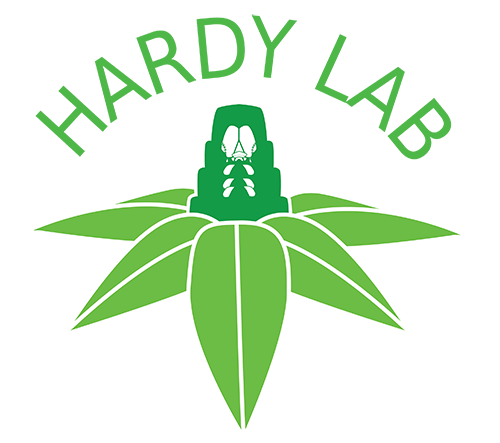Valid Names Results
Peliococcus agriensis Kaydan, 2015 (Pseudococcidae: Peliococcus)Nomenclatural History
- Peliococcus agriensis Danzig & Gavrilov-Zimin 2014: 406. unavailable name that is placed
- Peliococcus agriensis Kaydan 2015: 214-216. Type data: TURKEY: Aðri, Mount Aðri, N: 39°36’520’’, E: 044°12’498’’, on Artemisia vulgaris, 6/7/2006, by M.B. Kaydan.. Holotype, female, by original designation Type depository: Turkey: Kaydan's Personal Collection; accepted valid name Notes: Collected at 1635 m. Paratype: 1 adult female on a separate slide, with same data as holotype. Illustr.
Common Names
Ecological Associates
Hosts:
Families: 1 | Genera: 1
- Asteraceae
- Artemisia vulgaris | Kaydan2015
Geographic Distribution
Countries: 1
- Turkey | Kaydan2015
Keys
- CaballKaRa2024: pp.1665 ( Adult (F) ) [Update of taxonomic key to species of Peliococcus in the Palearctic region published by Kaydan (2015)]
- Kaydan2015: pp.214 ( Adult (F) ) [Key to species of Peliococcus in the Palaearctric region]
- DanzigGa2014: pp.403-406 ( Adult (F) ) [Palaearctic Peliococcus species]
Remarks
- Systematics: Peliococcus agriensis Kaydan can be distinguished from other species in the genus in having: (i) only 1 size of oral collar tubular duct in each cluster and each cluster with 1-6 (usually 3) multilocular disc pores, and (ii) quinquelocular pores present medially on the venter. P. agriensis is most similar to P. calluneti in having 1 size of oral collar tubular duct on dorsum, but P. agriensis differs from P. calluneti in having (data for P. calluneti in brackets): (i) 9 segmented antennae (7 or 8 segmented antennae), and (ii) no clusters medially on venter of head (clusters present on venter of head). (Kaydan, 2015)
Danzig & Gavrilov-Zimin (2014) used the name "Peliococcus agriensis" before it was made available in Kaydan, 2015. According to Article 16 (specifically 16.1 and 16.4) of the ICZN (1999), this name must be considered unavailable from their work.
- Structure: Body elongate oval, 1.51–1.76 mm long, 0.75–0.98 mm wide. Eye marginal, 35–38 µm wide. Antenna 9 segmented.
- General Remarks: Detailed description and illustration in Kaydan, 2015.
Illustrations
Citations
- CaballKaRa2024: key, 1665
- DanzigGa2014: description, distribution, host, illustration, key, taxonomy, 406-408
- Kaydan2015: description, distribution, host, illustration, key, taxonomy, 215-216
- UlgentErYa2022: distribution, host, S124


